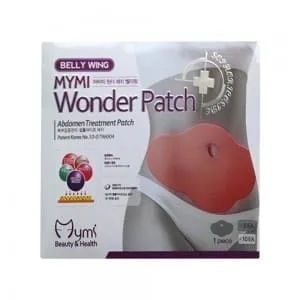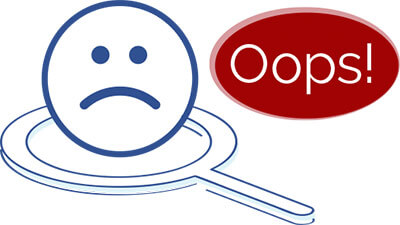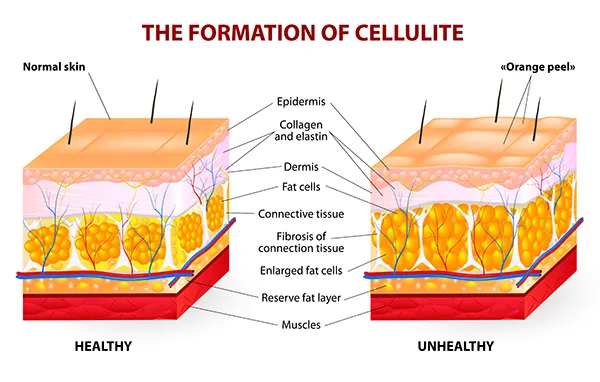Filters
Wellbeing
- Antioxidants (43)
- Brain Health (38)
- Cellulite (1)
- Circulation (30)
- Collagen (7)
- Detox & Cleanse Supplements (29)
- Devices (4)
- Digestion (36)
- Hair, Skin and Nail Vitamins and Supplements (56)
- Heart Health (39)
- Immune System (83)
- Joints & Bones (42)
- Kid's Health (5)
- Liver health (7)
- Men's Health (11)
- Omega's (9)
- Oral Health (4)
- Sleep (11)
- Women's Health (17)
What Is Cellulite?
Cellulite is an issue which affects many of us and even affects up to 90% of women at some point in their lives. Although cellulite can affect both sexes, it is much more common in females, mainly because they are more likely to have the particular types of fat and connective tissue that are an issue with cellulite. Cellulite occurs when underlying fat deposits start to push through the connective tissue under the skin which results in the bumpy ‘orange peel’ effect of cellulite.
Although cellulite is a result of underlying fat deposits, having cellulite on your body doesn’t necessarily mean that you are overweight or have a large amount of excess fat. Any body shape or type can be affected by cellulite at some time as it is not just caused by weight. However, those that are overweight are more likely to encounter the issue than those who aren’t. The most common areas for cellulite to occur are the thigh and buttock area, arms and stomach.
Cellulite & The Skin
To properly understand why we have cellulite and what causes it, you first have to understand how our skin works. Our skin consists of three layers that each have different functions but all work together.
Epidermis – The epidermis is the outer layer of skin which is made up of several a number of thin layers and is what we see. The main function of the epidermis is to act as a skin barrier to external agents. This outer layer of skin consists of fats and dead cells, which are constantly being renewed and replaced. There are living skin cells in this layer of the skin that are constantly moving upwards. By constantly replacing and renewing these skin cells it keeps out infection and acts as a constantly strong and healthy barrier.
Dermis – The dermis is the middle layer of skin and is where cellulite occurs. This layer of skin is the connective tissue and contains a layer of fat. We also have water deposits in this layer of skin, which to be healthy must be kept balanced. When the fat in this layer of the skin doesn’t get enough nutrients it can begin to contract. The dimples or ‘orange peel’ we know from cellulite are when these nutrients are missing and fat begins to push through this weakened skin.
Hypodermis – The hypodermis is the thickest layer of the skin and is made up of adipocytes which are cells that specialise in accumulating and storing fats. This layer of fat cells is used to keep the body warm and also as an energy reserve.
What Causes Cellulite?

Diet
What we eat is of course one of the biggest and most common causes of cellulite. Those with a diet high in fat, carbohydrates or salt are more likely to develop cellulite.
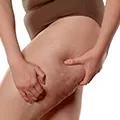
Hormones
Many believe that hormones such as oestrogen, prolactin and noradrenaline may all affect the appearance of cellulite.

Clothing
Anything we wear that is tight to the skin, including underwear with tight elastic, limits the blood flow and therefore may contribute to the formation of cellulite.

Lifestyle
Not just what we eat but how we live our lives may be a large factor in the production of cellulite such as those that don’t exercise or those that smoke.

Genetics
Certain genes may be passed down which can affect cellulite so you would be more likely to have cellulite if it runs in the family.

Dehydration
As cellulite occurs when the skin is lacking nutrients, a lack of water can be a big contributor to cellulite forming.
What Are The Different Stages Of Cellulite?
Cellulite is often graded into four different stages depending on the severity:
Grade 0 – Skin appears smooth and there is no dimpling of the skin.
Grade 1 – There are no obvious signs of cellulite but can be seen when pinched.
Grade 2 - The skin starts to lose elasticity and there is visible dimpling whilst standing.
Grade 3 – Cellulite is clearly visible when both standing and lying and there is an ‘orange peel’ effect.
Home Methods To Get Rid Of Cellulite
If you are looking to get rid of cellulite but don't like the idea of using the expensive and invasive medical route, ways to reduce cellulite at home could be more for you.
| Different Home Cellulite Treatments | Creams & Gels | Patches | Clothing | Scrubs | Devices | Konjac |
|---|---|---|---|---|---|---|
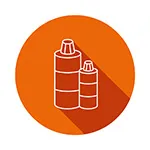 Click here |
 Click here |
 Click here |
 Click here |
 Click here |
 Click here |
|
| Benefits |
|
|
|
|
|
|
| Application areas | Apply directly to the affected area | Hairless parts of the body like stomach, thighs and bottom | Worn discreetly underneath clothing | Thighs, upper arms, buttocks and hip area | Thighs, upper arms, buttock and hip area | Face or Body |
| Functionality |
|
|
|
|
|
|
| Frequency of use | Apply Daily | Once a day | Wear daily | Twice a week | Weekly use | Daily use |
Cellulite Prevention
Although cellulite can be caused by factors out of our control such as hormones and genetics, there are a few ways we can actively try to prevent cellulite from forming. Eating healthy, low-fat foods such as fruits, vegetables, and fibre can help as well as doing regular exercise. Reducing stress may also help with preventing cellulite. Finally wearing loose-fitting underwear can also be beneficial.
How Can WeightWorld Help?
WeightWorld can help as we offer a wide range of cellulite treatment products to choose from. All you have to do is simply find the one that works best for you!
